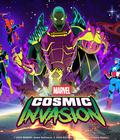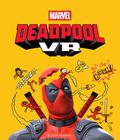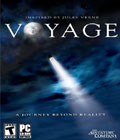Genre: Adventure
Publisher: The Adventure Company
Developer: Kheops Studios
Release Date: August 16, 2005
Voyage: Inspired by Jules Verne is a fantastical trip to the moon and back, loosely based upon the novels "From the Earth to the Moon" and "Around the Moon" by Jules Verne, which cover the same topic. The game tells the story of Michel Ardan, a quirky and fearless adventurer and explorer. Ardan concocts a daring method for 19th century man to travel to the lunar surface: build an enormous cannon and fire a massive artillery shell (containing himself and two fellow explorers) at the moon. Although I am sure the original novels upon which this game is based are quite good, if not classics of science fiction, the game falls short of its predecessors in many respects.
To start with the positive, the artistic content of the game is quite good, and the environment that the game creates is highly detailed and very imaginative. On his journeys through the moon, Ardan encounters many unusual things ranging from true aliens a la "X-Files" to carnivorous forests. The flora (plant life) is exquisitely rendered in many places, and the areas through which Ardan travels are well constructed and very creative. The architecture of the alien race is stunning in some places, and adds a great deal to an otherwise uninspiring experience.
However, the "actors" in the story are far less creative, and seem downright outlandish (in a not-so-good way). This, of course, is partly an aesthetic choice (I thought they looked ridiculous and annoying), but the character animations are jerky and unrealistic, leaving the player facing a supposedly superior race that looks as if it can barely stay on its feet or interact with its environment.
At the heart of the game, the puzzles are quite good. In some ways, they are the saving grace of the experience and make the game worth playing. They are well designed and they were all fun, once I figured out their mechanics and got a sense of how to solve them (more on this later). In particular, the game uses audio puzzles in a way that is not often seen in the adventure genre. I found these puzzles to be the most interesting and fun, as they were unique from most others in similar games. The puzzles are challenging and the rewards for completing them are, well, rewarding.
Unfortunately, the art and the puzzles are the strongest aspects of Voyage. The story, for me the most crucial part of any game, is mostly nonexistent. We play the part of Ardan, an adventurer who finds himself stranded on the moon. We must solve the various puzzles to basically force the aliens we encounter to help us get back to Earth. That's the depth of the story, all of which you can guess from the first 20 minutes of the game.
From that point, there is little in the way of development or growth. The game becomes a series of puzzles with very little tying them together, each of which needs to be solved mostly to get to the next puzzle. Although the game does a fairly good job of tying the puzzles into the environment in which they are found, they don't do much to forward the plot. The characters were shallow and uninteresting, and the disdain and disrespect the aliens show for Ardan and all humans, though mildly amusing at first, quickly became tiring and downright annoying.
Furthermore, the story, and for that matter the environment, does little to provide the player with any kind of context for how to solve a puzzle. The puzzles are fairly good once you figure out how the work, but the game doesn't give you much help (Google, however, will provide you with any help you need). Voyage quickly became a click-fest for me, as I tried every conceivable combination of items, switches and levers for every puzzle. It became a mindless task until I happened upon the right combination or read enough of a walkthrough to give me clues I needed. This is not an issue with the puzzles but instead an issue of their presentation. It wasn't about thinking, it was about clicking. Clicking everything.
For me, who counts story as the only thing that really matters, the lack of immersion and connection to the game's inhabitants killed the experience. The game's inability to captivate players is most prevalent in the distinct lack of cut scenes or significant animations. Voyage instead uses storyboards with comic-style line drawings to further the narrative, such as it is, and explain major developments. Like so many other aspects of the game, this is interesting at first but quickly wears out its novelty. I am sure that this approach significantly reduces both cost and production time, but I believe the game suffers for it. In the current market, and even in the adventure genre, quality animations and cut scenes are practically a necessity.
In terms of gameplay, Voyage is fairly standard for the adventure genre; this is a fairly mature genre, and the conventions for game controls are more or less fixed. Voyage has satisfactory controls, and even introduces some interesting twists by incorporating gravity, or the lack thereof, into moving between areas.
However, the game has an absolutely abysmal inventory system, basically a dumping ground for anything that you find throughout your wanderings. For a game that relies so heavily upon the inventory and combinations of items to solve puzzles, this is unacceptable. Twelve screens of slots, each screen with 18 slots, is ridiculous. Half the challenge of the game came down to locating the one item in my inventory that I needed, which is certainly not a good thing.
As my wife points out, for me to not want to finish a computer game does not speak highly of the product (the only motivation was a desire to be thorough for the sake of this review). The game had its good points, but overall, I felt that it was lacking. This is especially disappointing because both The Adventure Company and Kheops have previously released games of a much higher caliber that were truly memorable and enjoyable experiences. The puzzles throughout Voyage show the expected creativity and fun, the rest of the game detracts from them.
For adventure aficionados, the game may be worth the time and money, but wait for it to go on sale. For the casual gamer who enjoys the adventure genre, this is one that you can pass by. Voyage: Inspired by Jules Verne may have the word "inspired" in its title, but the game is far from inspired, or inspiring.
Score: 6.0/10
More articles about VOYAGE: Inspired by Jules Verne










 Based on the premise of Verne's novel, Voyage, previously called Journey to the Center of the Moon, follows as a group of scientists create a space capsule with the intent of landing on the moon's surface. As scientist Michel Ardan, players are able to wander the surface of the moon and witness the explosion of plant life at dawn.
Based on the premise of Verne's novel, Voyage, previously called Journey to the Center of the Moon, follows as a group of scientists create a space capsule with the intent of landing on the moon's surface. As scientist Michel Ardan, players are able to wander the surface of the moon and witness the explosion of plant life at dawn.


















































